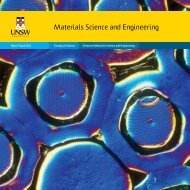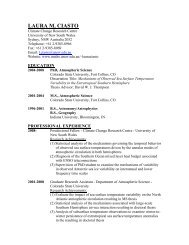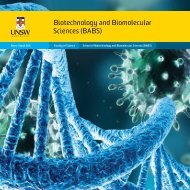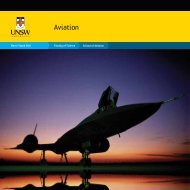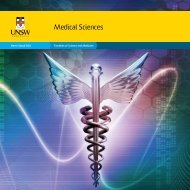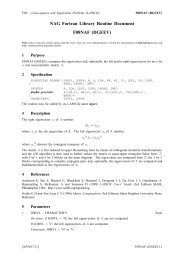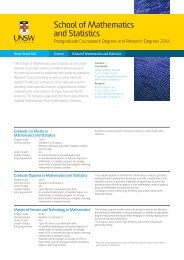2011 Postgraduate Research Competition - UNSW Science - The ...
2011 Postgraduate Research Competition - UNSW Science - The ...
2011 Postgraduate Research Competition - UNSW Science - The ...
You also want an ePaper? Increase the reach of your titles
YUMPU automatically turns print PDFs into web optimized ePapers that Google loves.
Page |20<br />
Novel Antifouling Approach: Micro-Fabricated<br />
Surfaces for the Control of Marine Microbial<br />
Colonisation and Biofilm Formation<br />
Gee Chong Ling and Staffan Kjelleberg<br />
School of Biotechnology & Biomolecular <strong>Science</strong>s<br />
Abstract<br />
An enhanced understanding of the processes that lead to rapid microbial biofilm formation<br />
in marine waters will facilitate the development of antibiofilm control technologies. Here we<br />
report on the effect of micro-fabricated polydimethy-siloxane (PDMS) surfaces, offering<br />
different architectural features, on the community composition and structure of the biofilm<br />
formed during 28 days of exposure in marine waters. First, the development of microbial<br />
biofilm structures was observed using confocal laser scanning microscopy (CLSM) and biofilm<br />
biomass quantified using 3D-CLSM image analysis. Second, the community composition of<br />
the attached microbial biofilm on these surfaces was studied using 16S-TRFLP. CLSM imaging<br />
revealed a different biofilm formation pattern, with surface topography smaller than 4m<br />
preventing microcolony formation and hence altering biofilm development without impact<br />
on the biofilm biomass. 16S-TRFLP analysis of surface attached microbial communities<br />
revealed a successional pattern over time with no significant difference among surfaces. We<br />
conclude that the different micro- scale topographies used in this study impact on the<br />
attachment and development of surface associated microbial communities without altering<br />
the biomass or community composition during the time course of the experiment. Several<br />
mechanisms are likely to regulate this outcome, possibly including topography-related<br />
hydrodynamic forces and physical impediments on biofilm and microcolony development.<br />
cutting-edge discovery science|



